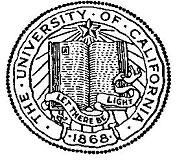

|

|
IN MEMORIAM
Walter Jackson Freeman III
Professor Emeritus of Neurobiology
UC Berkeley
1927 – 2016
Studying the brain came naturally to Walter Jackson Freeman III, who died on April 24, 2016, after serving on the Berkeley faculty for 57 years. He was born on January 30, 1927, in Washington D.C., into a family with long roots in medicine. His middle name was that of the great American neurologist John Hughlings Jackson; his father, Walter J. Freeman Jr., M.D., was the foremost practitioner of lobotomy in the days when it was a recognized therapy, and his great-grandfather was the noted brain surgeon William Williams Keen. Walter followed family tradition — as most other traditions — but only to a certain degree and not without putting his own stamp on them. As an undergraduate he studied physics at the Massachusetts Institute of Technology, English and philosophy at the University of Chicago, and electronics in the U.S. Naval Reserve. He entered Yale Medical School without ever receiving an undergraduate degree, and graduated cum laude in 1954. This was followed by postdoctoral work in neuropsychiatry at the University of California, Los Angeles.
Walter came to Berkeley in 1959 as assistant professor of physiology in the College of Letters & Science Department of Physiology-Anatomy which had just been formed by the members of the faculty who chose to stay in Berkeley when the San Francisco medical campus’s pre-clinical program moved back across the Bay. He rose through the ranks, including a term as department chairman (1967-72), until the biology reorganization merged Physiology-Anatomy into the newly-established Department of Molecular and Cell Biology in 1989. He officially retired in 1994 but taught seminar courses and maintained an active laboratory for many more years. He continued to come to his campus emeritus office until shortly before he died. Academic Senate service included two years (1990-91 and 1991-92) on the Committee for Undergraduate Scholarships and Honors. While chairman of the Department of Physiology-Anatomy he represented the Berkeley Division at meetings of the statewide Assembly both in 1970-71 and 1971-72. Throughout his long research career in Berkeley, Walter concentrated on neural processing in mammalian brain regions and he wisely chose an animal preparation, the olfactory bulb of the rabbit, that constitutes an important junction where sensory signals are decoded and sorted for transfer to be utilized in the formation of memory, the generation of motor actions and the establishment of emotional states. During Walter’s early years as a neurophysiologist, the only available probe was the electrode. While most of his colleagues applied it to single cells, Walter’s training and clinical knowledge convinced him to look at electrical measurements from larger ensembles of neurons. His discovery of oscillatory potentials on the surface of the olfactory bulb had a considerable impact on the development of a whole field of study. He became one of the earliest practitioners of applying mathematical and engineering formulations to analyze neural activity in the mammalian cortex. It meant looking at the brain in its electro-magnetic manifestations as a dynamical, i.e., time-varying, system and trying to describe the succession of its states, going in and out of equilibrium, by differential equations, usually nonlinear. Modern analysis in such terms often invokes chaos theory, and Freeman gathered an extensive and devoted following in a sophisticated circle of imaginative theoreticians who are seeking a framework of neural activity and indeed human behavior in mathematical terms. As the emergence of chaos theory illustrated, mathematics is a continuously evolving discipline and, because the operation of our brain is and will likely long remain a wide-open challenge, the temptation to join these two areas of study is hard to resist by those who have the requisite ability and training. Walter Freeman gave Berkeley an international presence in this field while always remaining locally available to mentoring graduate students, one or two at a time, hosting occasional postdoctoral scholars and offering graduate seminars.
As it happened, the breakthrough in decoding olfaction occurred decades after Freeman’s pioneering electrophysiological studies. Its molecular and genetic basis was revealed in the 1990s, a development validating the wisdom shown by Daniel Koshland and the group reorganizing Berkeley’s biology program in the 1980s, which placed neurobiology as a division into the Department of Molecular and Cell Biology. The new department proved hospitable to Walter Freeman and he was able to perform his research and attract postdoctoral coworkers to the state-of-the art laboratories in the newly-constructed Life Sciences Addition well into his retirement. As Berkeley’s neuroscience community grew and the Helen Wills Neuroscience Institute and the Redwood Center for Theoretical Neuroscience with their multiple connections across the campus were founded, Walter found many more colleagues and students who valued his unique approach to the brain, transcending traditional disciplinary boundaries.
During his tenure in Berkeley, Walter Freeman published over 500 research papers and several books. Recognitions and honors included, among others, a Guggenheim fellowship, Titulaire de la Chaire Solvay at Université Libre de Bruxelles, the Pioneer award from the IEEE Neural Networks Council, Spinoza Lecturer at the University of Amsterdam, a lifetime achievement award from the University of Salerno Medical School and the Helmholtz Lifetime Achievement Award from the International Neural Network Society. He was an honorary professor at Fudan University in Shanghai and Zhejiang University in Hangzhou.
Walter Freeman was preceded in death by his wife, Doreliesje “Do” Freeman, and is survived by his first wife, Maribelle Zechlin and their seven children: Luke, of Australia, and Abigail, Mathew, Walter IV, Rachael, Joran and Jennifer; five stepchildren: Mark, Tom, Kim, Rachel and Toni; and 18 grandchildren.
Gerald Westheimer, F. R. S.
2016